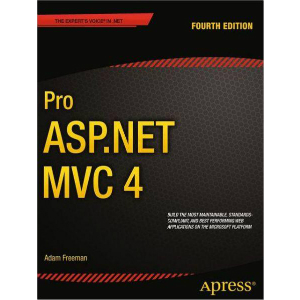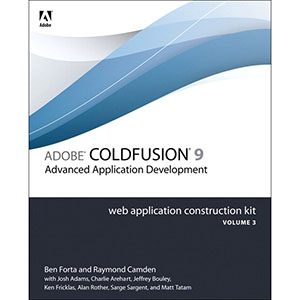Ultra-Fast ASP.NET 4.5, 2nd Edition

Ultra-Fast ASP.NET 4.5 presents a practical approach to building fast and scalable web sites using ASP.NET and SQL Server. In addition to a wealth of tips, tricks and secrets, you’ll find advice and code examples for all tiers of your application, including the client, caching, IIS 7.5, ASP.NET 4.5, threads, session state, SQL Server 2012 (otherwise known as Denali), Analysis Services, infrastructure and operations. By applying author Rick Kiessig’s ultra-fast approach to your projects, you’ll squeeze every last ounce of performance out of your code and infrastructure—giving your site unrivaled speed.
Rather than drowning you in options, Ultra-Fast ASP.NET 4.5 presents and explains specific high-impact recommendations and demonstrates them with detailed examples. Using this knowledge, you will soon be building high-performance web sites that scale easily as your site grows.
- Apply the key principles that will help you build Ultra-Fast and Ultra-Scalable web sites.
- Identify performance traps (such as with session state) and learn how to avoid them.
- Put into practice an end-to-end systems-based approach to web site performance and scalability, which includes everything from the browser and the network to caching, back-end operations, hardware infrastructure, and your software development process.
What you’ll learn
- A way of thinking about performance issues that will help you obtain real results.
- How to apply key principles that will help you build ultra-fast and ultra-scalable web sites.
- How to use the ultra-fast approach to be fast in multiple dimensions. You’ll have not only fast pages but also fast changes, fast fixes, fast deployments and more.
- Techniques that are being used by some of the world’s largest web sites.
- How to structure your HTML and CSS to create pages that load ultra-fast.
- Tips for using Ajax and IIS 7.5 to improve the performance of your site.
- How to use comprehensive caching at all tiers to deliver content faster.
- Why you should avoid traditional session state and how to make the best use of cookies.
- Tips and tricks for optimizing your ASP.NET and SQL Server code for performance and scalability.
- How to use Analysis Services to offload your relational database.
- Why many sites that serve individual pages quickly are not scalable.
- How to avoid common pitfalls that can have an adverse impact on your site’s performance, both now and as it grows.
- How to apply an end-to-end systems-based approach to web site performance and scalability, which includes everything from the browser and the network to caching, back-end operations, hardware infrastructure, and your software development process.
Who this book is for
This book will be useful for intermediate to advanced developers and architects who want to improve the performance of their ASP.NET-based web sites. Some knowledge of ASP.NET, SQL Server, and IIS is assumed. Example code is provided in C#. Experienced web developers who have recently moved from Java or PHP to .NET will find lots of valuable and interesting information. This book will also be useful for non-developers who have a technical interest in what makes a web site fast. In particular, if you’re involved with web site operations, testing, or management, you will discover many of the principals and issues that your development teams should be addressing, along with demonstrations that help drive the points home.
Table of Contents
- Principles and Method
- Client Performance
- Caching
- IIS 7.5
- ASP.NET 4.5 Threads and Sessions
- Using ASP.NET to Implement and Manage Optimization Techniques
- Managing ASP.NET Application Policies
- SQL Server Relational Database
- SQL Server Analysis Services
- Infrastructure and Operations
- Putting It All Together
- Glossary
Book Details
- Paperback: 460 pages
- Publisher: Apress; 2nd Edition (July 2012)
- Language: English
- ISBN-10: 1430243384
- ISBN-13: 978-1430243380














